Peak shaving - stable power grid at constant prices
by Vivian Bullinger | 01.04.2022
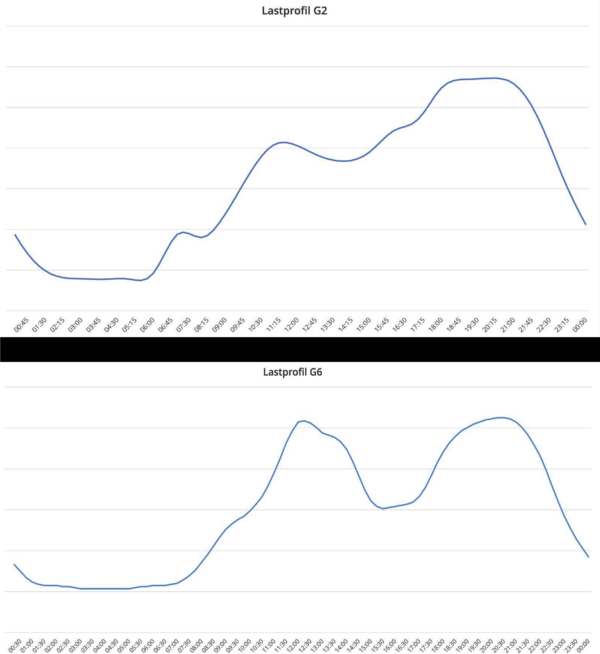
Peak shaving avoids or figuratively shaves off peak loads, which are relevant to high electricity prices and a challenge to grid stability. There are two options for this: reducing power demand, or adding another power source. Peak shaving is used whenever there are large fluctuations in consumption. The goal is to ensure that consumption remains as constant as possible, and thus that the grid remains stable. With the increase in external storage, such as e-cars or battery storage, the topic takes on a new dimension. Solutions are needed that enable intelligent consumption control.
Standard load profiles help with demand planning
Our energy infrastructure is a very fragile and sophisticated system. It must be ensured at all times that sufficient energy is available to meet demand. In order to counteract the volatile demand in planning terms, standard load profiles for various consumer groups have been created based on a large amount of data from trade associations and network operators. This allows the energy and power demand to be estimated and covered by means of the available power plants.
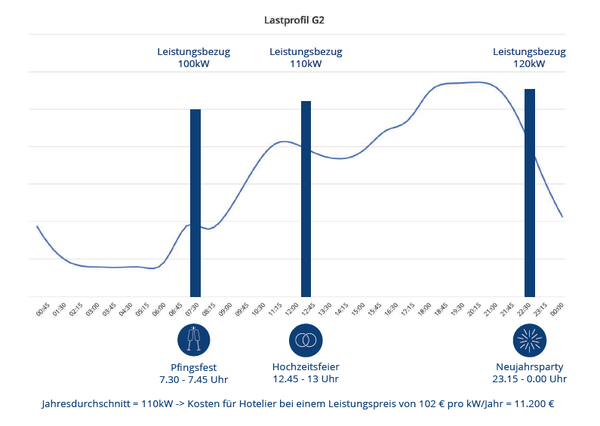
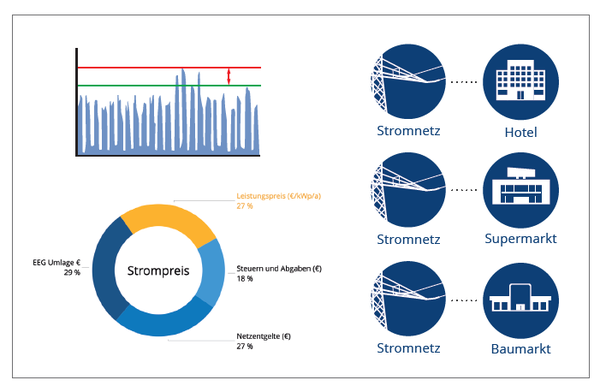
Different Industries with Different Requirements
Industry and commerce have very special requirements for the power grid. They account for around 70% of total electricity consumers and therefore have a high impact on the grid. For example, hotels, supermarkets, or DIY stores have a high electricity demand due to their large number of consumers. This can be completely or partially covered by the use of a photovoltaic system and an electricity storage system. This ensures that the electricity demand is noticeably reduced and CO2 emissions are lowered. But it is precisely with these three groups that additional problems arise. Due to the high number of consumption points, the base load that these consumers permanently draw from the grid is very high. In addition, consumption peaks can occur as a result of switch-on processes or temporary operation of other high consumers. In order to be able to serve these consumption peaks or load peaks, capacities must be kept available in the infrastructure of our energy network.
These "buffers," in turn, must be paid for by the consumers through a separate charge in the form of a capacity charge. Depending on the region and grid operator, this capacity charge is between €40 and €180 per kilowatt (kW) provided.
Example calculation of costs for power provision:
Power provision: 180 kW
Power price: 85 € per kW
Costs for power provision: 15,300 € per a
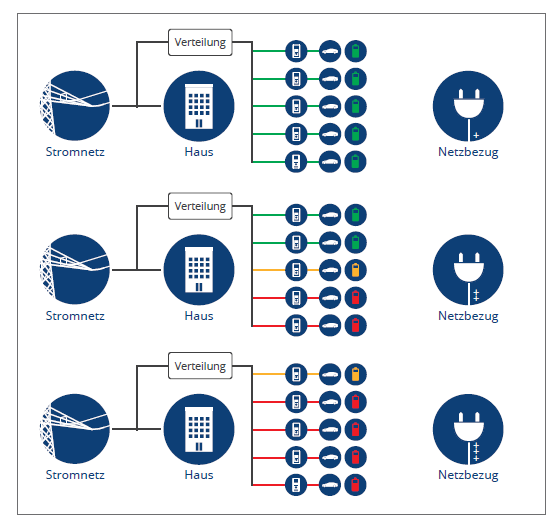
E-mobility Exacerbates the Problem
Another factor is causing a further increase in consumption, particularly in the hotel and retail sectors. For hotels, supermarkets, or DIY stores, the development of our mobility in the form of e-mobility is becoming increasingly important. Two main aspects follow from offering charging possibility for e-cars at hotel and retail:
1. by offering customers e-vehicles to be charged appropriately on site (e.g. during their stay or shopping), the service towards the customer is increased and thus customer loyalty is enhanced.
2. these additional consumers lead to an increased demand for connected load and further power peaks at the grid connection. This in turn has a negative impact on energy costs and increasing power prices, or leads to the need for further expansion of the grid connection, which can quickly lead to high costs.
Example - costs for higher power supply for 5 charging points:
Current grid connection capacity: 180 kW
Current power price: 85 € per kW
Costs for power provision: 15,300 € per a
5 charging points with 22kW each:
5 x 22kW = 110kW
Assumed simultaneity factor according to DIN VDE 0100-722 corresponds to factor 1
New grid connection power: 110kW + 180kW = 290kW
Costs for power provision: 24,650 € per a Additional costs due to e-charging infrastructure: 9,350 € per a
The simultaneity factor of 1 required by the standard is problematic in this analysis. This assumes that in the extreme case all charging stations are operated at the maximum power. In reality, however, this case is hardly achievable, since the charging stations will be charging at different powers at all times and charging will not always take place at all charging points. But here too, PV energy provides a remedy. By using a PV system in conjunction with a large storage system and intelligent control, the connected load at the grid interconnection point can be reduced.
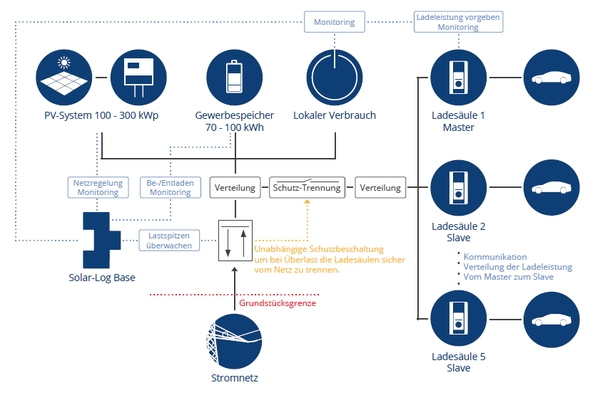
Component and load management for effective peak shaving
Effective peak shaving stands and falls with the intelligent control of components in particular. The Solar-Log™ energy management system has been dealing with this topic for a long time and is already highly compatible with various components on the market. This makes it possible for the system to control a large number of components with each other. This is particularly true for PV systems and the inverters installed in them. By using the Solar-Log™ control system for peak shaving and load management, the PV system can be used in conjunction with a qualified* commercial storage system to reduce the connected load at the grid interconnection point and continue to use sustainable energy for e-mobility. By using the Solar-Log™ System, in addition to monitoring the PV system or implementing the grid-compliant connection to the medium-voltage grid, it is also possible to control an e-charging infrastructure and include a commercial storage system in the intelligent load management.
What does this look like in practice?
Assuming the user succeeds in reducing the connected load by 60 kW by using the Solar-Log™ control.
What effects would this have?
1. the power actually required from the grid is reduced, which provides active relief in the grid and helps everyone to ensure a stable energy infrastructure
2. 60 kW less power demand also means less costs in terms of power price, in our case: 60 kW * 85 €/kW/a = 5.100 € per a
3. by using an intelligent control system, the simultaneity factor of "1" may be reduced according to DIN VDE 0100-722, e.g. to 0.75, because it is assumed that only 75% of the max. power is taken off at the same time.
Result from the above example:
110 kW connected load for e-charging infrastructure with simultaneity factor 0.75 ➞ 82.5 kW max.
connected load Reduction of total connected load by 60 kW ➞ 202.5 kW new max. grid connected load.
New capacity price: 17,212 €/a
Savings compared to before: 7,438 €/a.
Three Positive Factors: Energy Transition, Grid Stability, Costs.
Consistent implementation of peak shaving leads to a reduction in costs and greater grid stability. This is supported by an energy management system that takes over the intelligent control of various components and offers solutions for monitoring at the grid connection point and load management. A high degree of compatibility with PV inverter systems offers the user maximum flexibility in the selection and also for future changes. Thanks to smart control of PV energy, it can be maximized, effectively reducing grid-connected power. This, together with peak shaving, saves costs and is an important factor in the energy transition and supporting the energy grid.
Back to the overview





